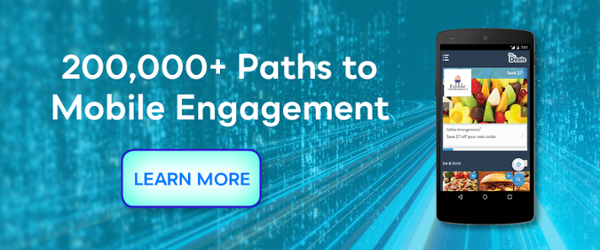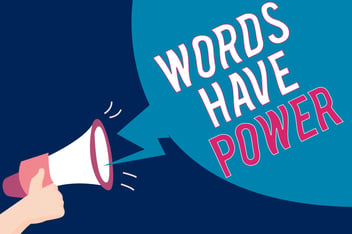Three Emerging Trends in Member Engagement: Competitive Clamor, Fickle Followers and the Value of Trust
Have you seen our Loyalty Statistics: the Ultimate Collection page lately?
If not, you should. It’s ballooned to a jaw-dropping 1000+ statistics curated from across the web over the last 5 years. And it’s still growing.
They come from studies run by industry leaders and top firms across the nation. Organizations and businesses have used it for research, presentations and to influence member benefit strategies. It has become a trusted resource for a host of companies worldwide as they navigate the complex and sometimes confusing notion of “loyalty.”
As obsessed as we are about all things member loyalty and member benefits for associations, we recognize that no one statistic tells the full story. Still, we’ve dedicated this entire blog to exploring every nuance of customer and member loyalty – and as we’ve organized the statistics, a few interesting trends have emerged.
#1 - More Loyalty Programs Competing for Attention — and Failing
 Attracting people to your loyalty program is a massive undertaking, and nothing is more frustrating than seeing membership numbers rise while usage stays stagnant. After all, what’s the point of having a loyalty program if people aren’t finding value in it?
Attracting people to your loyalty program is a massive undertaking, and nothing is more frustrating than seeing membership numbers rise while usage stays stagnant. After all, what’s the point of having a loyalty program if people aren’t finding value in it?
It was only a few centuries ago (a short time in the grand scale of humanity) that a shopper’s only option was the town’s General Store. It doesn’t take much to earn a person’s loyalty if you’re the only option available.
But now the market is flooded with options. So much so that 63% of Millennials and Gen Z agree they have so many choices, a brand has to show them loyalty in order to gain their business — not the other way around.
The same argument applies to loyalty programs. 65% of consumers reported they actively engage with fewer than half of their loyalty programs and 41% with fewer than a quarter of them. Americans collectively hold 3.8 billion memberships in customer loyalty programs. Consider then, that Millennials report maxing out with activity in 4.2 loyalty programs, and only 3.9 programs for all consumers.
The reality is, your loyalty program might get ignored simply because members are engaged in too many others. And with that kind of competition, you can’t skimp on the value.
The statistics have clearly identified the issue plaguing loyalty platforms everywhere. The best member benefits, the ones that succeed, know how to stand out from a crowd. If you need some ideas, click to view some strategies for standing out from the crowd.
#2 - Losing Loyalty Can Happen Fast, But Winning it Back Still Possible
Loyalty is hard-won in the first place, so the best-case scenario obviously is to never lose it. However, bad experiences happen. Employees have off days, products are sometimes faulty, benefits sometimes fail to live up to expectations.
And the statistics are showing just what it takes to convince customers to switch away from a brand to which they were previously loyal.
The answer? Not much.
Consumers reported it takes anywhere from 1 (19%) to 3 (58%) bad experiences before they take their business elsewhere. Millennials reported that prices 10% to 15% better at a competitor could get them to switch. And fully half (50%) reported they simply found someone else who better meets their needs.
It may seem discouraging to see how increasingly easy it is to lose once loyal customers to other brands. But don’t throw in the towel. You can actually win them back. They’ve said so themselves.
When brands develop a history of transparency, about 90% of consumers said they are more willing to give brands a second chance after a bad experience.
This means before the bad experience even takes place, people want companies to have a strong social media presence that makes them feel more human. Then, once they’ve built this platform of trust, it’s the perfect forum for making things right. After all, when people see you making things right with one member, it can deepen their trust in you, even when they’re not directly involved.
Plus, it’s important to remember that customer engagement is a cumulative experience. And one bad day will seem so much less important if it’s drowning in a flood of positive ones.
#3 - The Key to Getting Valuable Customer Personal Data? Trust and Value
Data is king. Many companies are hungry for data about their members and customers. After all, armed with valuable demographics, organizations could start segmenting their marketing plans and really delivering up the best value to each individual.
The problem is, most organizations don’t know quite how to get it.
The statistics show that 34% of Millennials won’t join a membership program because the enrollment process is too long. At the end of the day, members aren’t going to give up personal details for nothing.
I myself have joined a group or 2 with the information: First name = Me, Last name = Me, email address = Me@me.com. Why? Well I couldn’t tell if it would be worth my while without signing up first. And I didn’t want them bugging me if it wasn’t.
Trust has to come first. Trust that their membership will bring them value. Trust that you will use their information with care. So what does that mean for organizations? Try asking for the bare minimum of information to help them get in the door. After you’ve developed that trust, you can ask for more detailed information.
Luckily, the statistics also show that the vast majority of people are more than willing to share their information… as long as you make it worth their while. In fact, 90% of consumers are okay with brands knowing more about them if it helps deliver a more rewarding and satisfying shopping experience.
So what will members trade their personal data for? Well, statistics show they are most interested in exclusive deals (60%), the ability to gain points and rewards (56%) or for a more personalized experience (55% of Millennials).
So, if incentives and personalized value will get you the data you’re looking for, make sure that value is present in your loyalty program.
Let's Learn Together
There are a lot more membership loyalty statistics where those came from, and a lot more conclusions to be drawn from them. Take a look for yourself. If you notice any trends, we'd love to hear from you. Comment below.
Related articles:
- Three of the Most Influential Factors When It Comes to Loyalty
- Research: The Growing Gap Between Leaders and Their Members
- What is Member Engagement (And Why Your Membership Growth Depends on it)
Topics: Customer Engagement, Member Benefits, member retention, millennial statistics, customer retention, discount program, member engagement, customer loyalty, statistics, consumer trends, Benefits Trends, loyalty programs, member loyalty

Written by: Kendra Lusty





.jpeg)







Share your Comment.